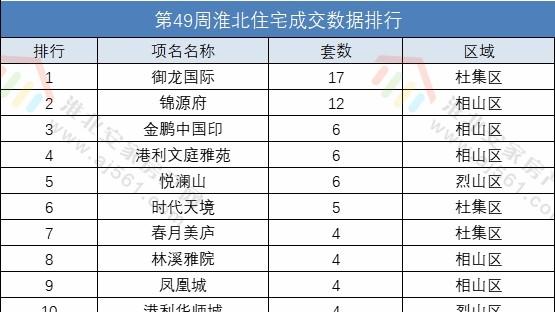幽沉谢世事,俯默窥唐虞。这篇文章主要讲述[Flutter]专题Flutter 中的 AppBar详解#yyds干货盘点#相关的知识,希望能为你提供帮助。
这里是坚果前端小课堂,欢迎关注公众号“坚果前端”,领取flutter电子书以及源码
AppBar应用栏是各种应用程序中最常用的组件之一。它可用于容纳搜索字段、以及在页面之间导航的按钮,或者只是页面标题。由于它是一个如此常用的组件,因此 Flutter 为该功能提供了一个名为??AppBar??的专用小部件。在本教程中,我们将通过一些实际示例向您展示如何在 Flutter 应用程序中自定义 AppBar。以下是我们将介绍的内容:
Flutter 中的 AppBar 是什么?Flutter AppBar 是根据??Material Design??指南构建的应用程序组件。它通常位于屏幕顶部,并且能够在其布局中包含其他小部件。AppBar 通常显示品牌信息,例如徽标和标题,并且通常包含按钮或其他用户交互点。以下是 Flutter 中默认的 AppBar 的样子:
// Mostly, AppBar is used inside a Scaffold widget.
Scaffold(
appBar: AppBar(),
),
应用栏布局在Flutter中,AppBar的布局主要包括三个组成部分:??leading???,??title???,和??actions???。??leading???放置在AppBar的最左边位置;??title???并??actions??出现在它的右边。
??leading??
??leading?? 接受一个小部件,可以分配任何东西——文本、图标,甚至一行中的多个小部件。
AppBar(
leading: Icon(Icons.account_circle_rounded),
),
【[Flutter]专题Flutter 中的 AppBar详解#yyds干货盘点#】您可以控制??leading??可以占用多少宽度:
AppBar(
leading: Icon(Icons.account_circle_rounded),
leadingWidth: 100, // default is 56
),
如果??leading??未提供,AppBar 会自动为我们暗示。示例包括返回上一页的导航箭头或打开抽屉的菜单图标。当上一条路线可用时,导航箭头会自动出现。
class HomePage extends StatelessWidget {
@override
Widget build(BuildContext context) {
return Scaffold(
body: Center(
child: TextButton(
child: Text(Push),
onPressed: () =>
Navigator.push(context, MaterialPageRoute(
builder: (context) {
return SecondPage();
},
)),
),
),
);
}
}
class SecondPage extends StatelessWidget {
@override
Widget build(BuildContext context) {
return Scaffold(
appBar: AppBar(),
);
}
}
当我们将 添加Drawer到??Scaffold???时,会分配一个菜单图标??leading??来打开抽屉。
class HomePage extends StatelessWidget {
@override
Widget build(BuildContext context) {
return Scaffold(
appBar: AppBar(),
drawer: Drawer(),
);
}
}
如果需要,可以通过设置??automaticallyImplyLeading??false来防止这种行为。
AppBar(
automaticallyImplyLeading: false, // simple as that!
),
??title??
顾名思义,它主要用于显示标题,例如应用程序标题或页眉。
AppBar(
title: Text(Profile Page),
),
但您不仅限于此,因为也??title???需要一个小部件。您可以使用它来显示图标、图像、形状或使用布局小部件(例如??row???和 )的任意组合??column??。下面是一个例子:
AppBar(
title: Container(
width: 40,
child: Image.network(url),
),
),
默认情况??title??下,根据 Material 指南与 AppBar 的左侧对齐。您可以更改此设置以使其居中对齐:
AppBar(
title: Container(
width: 40,
child: Image.network(url),
),
centerTitle: true, // like this!
),
??actions??
??actions??是与 AppBar 右侧对齐的小部件列表。我们通常在用作按钮的应用程序中看到它们来触发下拉菜单、个人资料头像等。
AppBar(
actions: [
Icon(Icons.more_vert),
],
),
让我们再向列表中添加一个小部件:
AppBar(
actions: [
Container(
width: 30,
child: Image.asset(
assets/images/profile_pic.png,
),
),
Icon(Icons.more_vert),
],
),
在 Flutter 中自定义 AppBar现在我们熟悉了 AppBar 的布局,让我们通过使用主题选项将自定义提升到一个新的水平。AppBar 包含各种属性,包括颜色、大小、图标主题、文本主题等等。
背景颜色
以下代码将 AppBar 的背景颜色更改为深橙色。??500???添加以访问颜色的特定阴影,??900???即最暗和最亮??50??。
AppBar(
backgroundColor: Colors.deepOrange[500],
),
图标主题
下面的代码将图标的颜色更改为绿色,将大小更改为??36??:
AppBar(
actionsIconTheme: IconThemeData(color: Colors.green, size: 36),
),
文字主题
假设您想将文本颜色更改为带有较浅阴影的琥珀色,??200???并将字体大小设置为??24??:
AppBar(
textTheme: TextTheme(
headline6: TextStyle( // headline6 is used for setting titles theme
color: Colors.amber[200],
fontSize: 24,
),
),
),
Elevation
如果你想给 AppBar 一点高度,你可以使用??elevation???. 以下代码将 AppBar 的高度增加到??15??.
AppBar(
elevation: 15,
),
请注意 AppBar 被抬起并且阴影跨越了更大的区域。
阴影颜色
你甚至可以弄乱阴影的颜色。下面的代码将 AppBar 的阴影颜色更改为??orangeAccent??。
AppBar(
shadowColor: Colors.orangeAccent,
),
很酷,对吧?
工具栏高度和不透明度
最后,我们有工具栏属性。工具栏包含文字,图标,按钮,和其他任何公司的前景,除了小部件,如??Container???和??Image??。要更改 AppBar 工具栏项目的高度和不透明度:
AppBar(
toolbarHeight: 100, // default is 56
toolbarOpacity: 0.5,
),
结论如果你已经做到了这一步,你现在应该明白:
所以我们有了!关于 Flutter 的 AppBar 必须提供的所有内容的完整演练。我希望这篇文章能帮助你在未来所有的 Flutter 应用程序中创建漂亮的 AppBars。?leading???, ??title???, 和??actions??)
最后附上AppBar的一些属性AppBar({
Key? key,
this.leading,//左侧显示的图标 通常首页显示的为应用logo 在其他页面为返回按钮
this.automaticallyImplyLeading = true,//配合leading使用
this.title,//标题文本
this.actions,//右侧item
this.flexibleSpace,//显示在 AppBar 下方的控件,高度和 AppBar 高度一样,
// 可以实现一些特殊的效果,该属性通常在 SliverAppBar 中使用
this.bottom,//一个 AppBarBottomWidget 对象,通常是 TabBar。用来在 Toolbar 标题下面显示一个 Tab 导航栏
this.elevation,//控件的 z 坐标顺序,默认值 4,对于可滚动的 SliverAppBar,当 SliverAppBar 和内容同级的时候,该值为 0,
// 当内容滚动 SliverAppBar 变为 Toolbar 的时候,修改 elevation 的值。
this.shape,
this.backgroundColor,//AppBar背景色
this.brightness,//AppBar亮度 有黑白两种主题
this.iconTheme,//AppBar上图标的样式
this.actionsIconTheme,//AppBar上actions图标的样式
this.textTheme,//AppBar上文本样式
this.primary = true,
this.centerTitle,//标题是否居中
this.titleSpacing = NavigationToolbar.kMiddleSpacing,//标题与其他控件的空隙
this.toolbarOpacity = 1.0,//AppBar tool区域透明度
this.bottomOpacity = 1.0,//bottom区域透明度
this.toolbarHeight,
this.backwardsCompatibility,
this.toolbarTextStyle,
this.titleTextStyle,
this.systemOverlayStyle,
})
希望大家能够喜欢本文,谢谢
推荐阅读
- 实验(linux搭建FTP服务器)
- 码云出现错误git@gitee.com: Permission denied (publickey). fatal: Could not read from remote repository.P
- #yyds干货盘点#three.js中3D场景扩散波特效
- #yyds干货盘点# RobotFramework从基础到项目实战
- “元宇宙”究竟是什么
- 单个{customposttype}.php中的函数wp_insert_post()清除自定义字段
- WordPress主题说明的全宽
- 格式化WordPress主题中的PHP生成的HTML,用于站点文本logo
- 忘记制作子主题-现在可以完成吗()











